We’re excited to announce the winner of our May 2020 Preparedness Stories Contest (#PrepStoriesContest): Rita, from Greenville, Kentucky. Congratulations!
We received some wonderful stories last month (keep them coming) but none were quite as memorable or instructive as Rita’s.
In 2009, Rita lived through the biggest disaster in modern Kentucky history—a massive ice storm that knocked out her power for about two weeks. While others in her community waited in line for hours in the middle of winter for water and necessities, Rita and her husband stayed warm and fed.
After spending a couple hours talking to Rita, I can see why. She’s a prepping person, and the practical steps she took built a wall of safety around her family’s life—it was like an antidote to the panic and hardship others suffered.
Read on see to see how Rita kept safe and relatively comfortable through the worst storm in modern Kentucky history PLUS the see most important survival lessons she learned.
The Sights, Sounds, and Struggles of an All-Time Ice Storm
YOU LAY IN THE DARK & ALL YOU COULD HEAR WAS A CRACKING SOUND
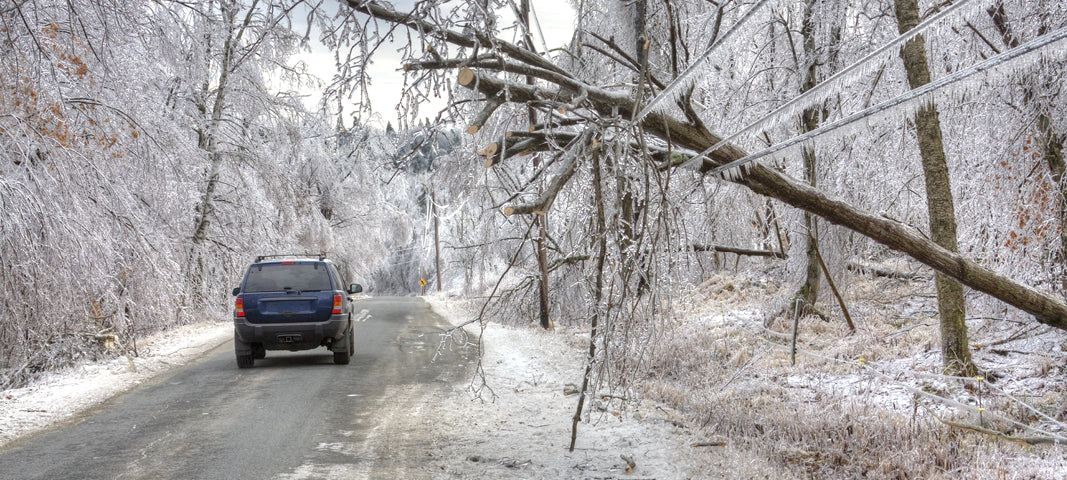
EE: [When the storm hit] did you have some warning that not only a big snowstorm was coming but [that] this was going to be bigger or worse than usual?
R: Yes, they were calling to have a lot of ice and sleet, but the predictions of where the worst was going to hit was guess work.
They were telling people to be ready and that there would be widespread power outages… and some people just packed up and went in a direction [where] they were predicting it wasn’t going to be as bad.
EE: What is it like on an hour-to-hour, day-to-day basis living through an ice storm like this?
R: It started like rain.
And the temperature was of course dropping. And then you can tell when it turns to ice because you can start hearing it.
It started that first night, and we didn’t lose power till early the next day. But the next night there came more. [It] was really windy, and of course, we had no power so it was dark other than my little oil lamps and what lighting I had in the house at that time.
But it was like a stillness. There were no vehicles driving. You didn’t hear traffic noise or anything. All you heard was the cracking of the tree limbs. Literally the ice cracking.
You lay there in the dark hearing that. Sometimes it would be a big crack. Across the highway [from us] there’s a big wooded area and you could even hear from there because there would be big limbs falling.
You would just hear that noise and you knew what it was, but you were like, “what are we going to get up to in the morning?”
THERE WAS A THICK LAYER OF ICE AROUND EVERYTHING THAT LASTED FOR DAYS
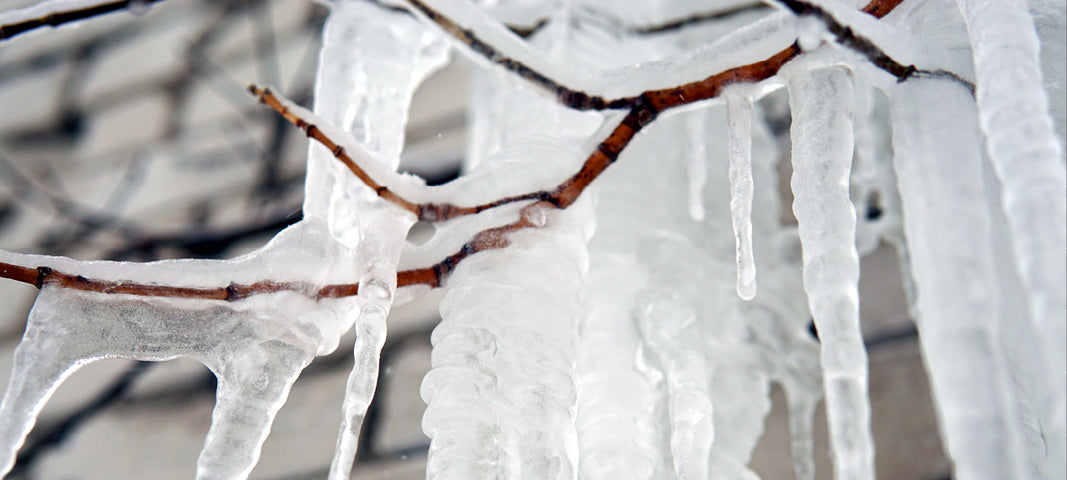
EE: The next morning, [could] you leave the house?
R: You could go outside, but everything was covered in ice.
We had just had a few trees in our yard but our entire yard was covered in limbs—small to medium-sized. And of course all the roads are a solid sheet of ice. You can drive on snow but driving on ice is a little more difficult. But of course, we didn’t really go anywhere the first couple of days.
EE: In the pictures I saw, there was just a layer of ice around everything. The trees, the railing, and patios and roads…So how long does that take to melt off?
R: Fairly soon it warmed up [to] 50° during the day. We were out in the yard, picking up limbs. Even though it was 50 degrees outside, everything was still covered in ice. It took it that long. It didn’t melt that quick[ly] because there was so much.
[And] even if you had to go somewhere, it was very difficult to get in your vehicle because it was all frozen.
EE: So did you just chip away at [the ice]?
R: Ya, well, several different things. [We used] some of the de-ice for your locks…And then you have to let it run for a long time and chip away a little bit.
THE ONE SUPPLY THAT MADE THE BIGGEST DIFFERENCE?
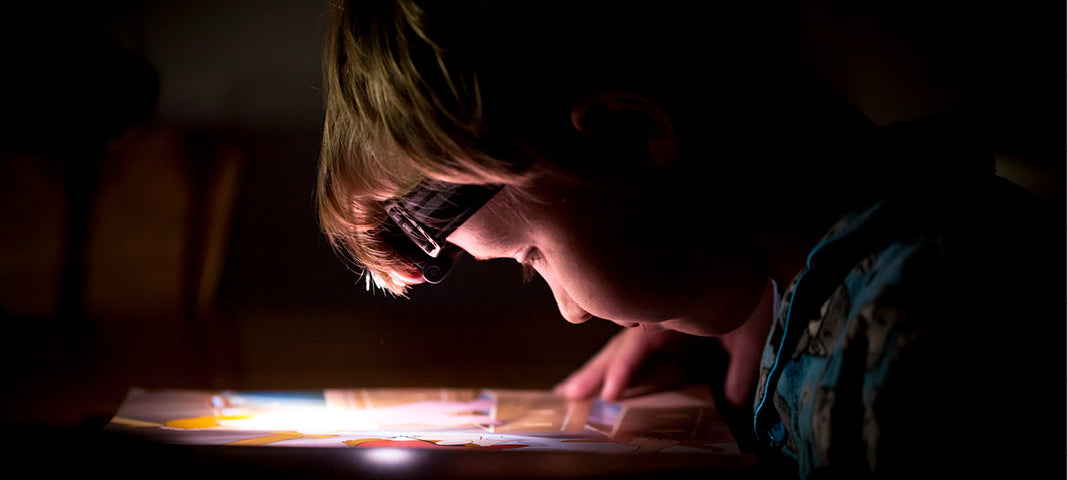
R: We used a kerosene heater for the first several days and [my husband] started calling around. We decided at that point we needed a generator. That was one of the things we didn’t have and we were like, “why have we not bought a generator?”
There were no stores around [Greenville] but about an hour south of us it wasn’t as bad. So [a few days after] we had to get [my husband’s] truck to where he could get out. Then he got up at four o’clock in the morning and bought a generator.
We were doing ok, but when we got the generator, it was like…we’re on easy street now.
BUT THERE WAS A CATCH…
The problem was fuel. A couple of times he had to drive that same distance south to actually get fuel…because our gas stations here weren’t open. We bought a few extra five-gallon gas cans and when he would go he would [have to] fill them up and that would only last a few days.
EE: And you’d have to make another trip?
R: Yeah.
The Aftermath: Living Through a Two-Week Blackout
WE WERE FLASHLIGHT COOKING IN FEBRUARY

EE: What was it like living without power for two-and-a-half weeks?
R: Initially, everything was closed. There were no grocery stores, no gas stations, nothing opened for several days. The only way people were getting stuff was if [and only if] they could get their vehicle out.
And it was slick. My husband had a four-wheel drive pickup [and] it was still bad. The roads were bad. People were having to drive to another town.
[As far as food goes] I had plenty to cook. We did use some of my stored food. We ended up using some of it and canned foods. I remember initially trying to take what I could out of the freezer that was going to ruin and cook it as soon as the power was off.
I had electric stove, so my stove didn’t work. But I have a grill. I used my grill quite a bit.
And actually, we own a house next door to us, and it’s a rental, but we happened to not have anybody living it right then when the ice storm hit and it has a gas stove. So I walked over there in the dark with my flashlight and used the gas stove, because they never did shut the gas off. There wasn’t really a danger from the ice storm as far as having gas.
THE CLERK TOOK YOU ONE AT A TIME WITH A FLASHLIGHT THROUGH THE STORE
It was several days, close to a week, before the stores around here [opened].
I went to Rural King and they took you in one at a time with a flashlight. You walked in with an employee, you told them your list, and they walked with you and you grabbed the items off the shelf.
They had a cash register or two improvised, I guess from their generator. But they were checking you out like that. It was dark in the store so they couldn’t just open up.
EVEN THE HOSPITAL GENERATORS WEREN’T ENOUGH TO KEEP THINGS UP AND RUNNING

EE: Part of me just imagines—and I guess I’m wrong—that when power went out all of these large stores [and] definitely hospitals would have back-up generators that would just pop on…and other than some extra noise [it] would be a little bit like life as usual.
But it’s sounding like that’s not what happened?
R: It’s not. At the hospital they have a big generator. But it doesn’t run everything quite like your normal power—everything doesn’t just pick up and run on it. There were limits. They couldn’t function…things were really tough for them for the first few days. They needed a bigger [generator] brought in [later] to function.
THERE WAS A LOT OF PANIC AND FEAR FOR THEIR LIVES
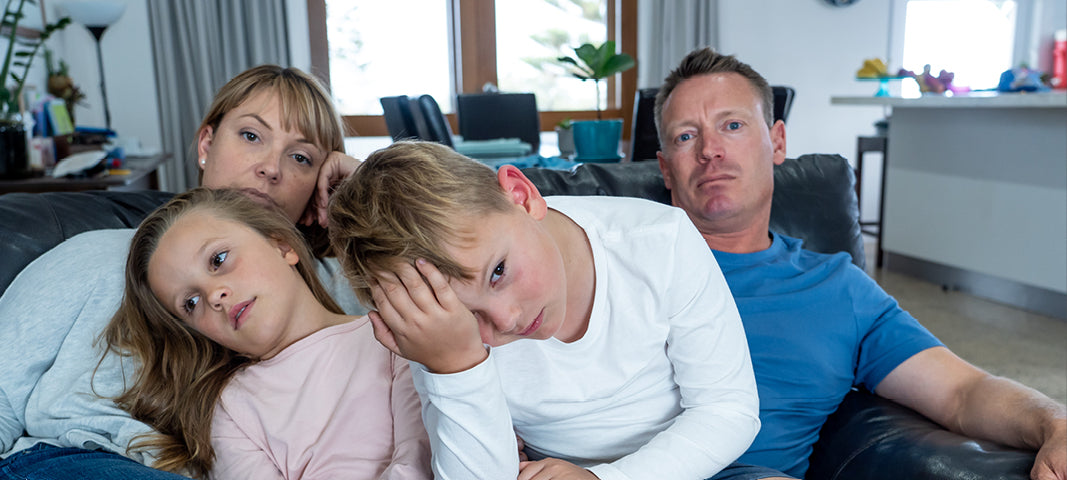
EE: So you sound like you were prepare to make it through a few days or even longer without power. But I would imagine that a lot of people around you weren’t that well prepared. Did you get any sense of how [others] were feeling?
R: Yes. There was a lot of panic.
I [had] a co-worker… she told me that it was a horrible experience. She feared for their lives almost— that’s how traumatized she was from it afterwards.
Listening to her, I was like, “I didn’t feel that at all.” I was very grateful that I didn’t have to go through it to that extent, and I felt really bad for her.
They had no food, no water, no power. They were staying [with one of her daughters]. Of course, none of the stores were open. They tried using one of her vehicles…and [were] able to get some things. But I believe her husband took some required medicines and he just happened to be out. She had grown kids and grandkids, so she definitely had a horrible experience.
[On top of that] some areas didn’t have water. The county water district [was] out for pretty much the whole time because of some pumping stations. There were people without water…I think for a week to ten days.
PEOPLE STOOD IN LINE FOR HOURS IN THE WINTER JUST TO GET A CASE OF WATER

How long did it take before you started seeing government assistance coming in? How long would you say the folks in your community were on their own?
I’m not exactly sure because we never went and stood in line for anything.
I do know there was water. It was several days before they were here. And I remember hearing other people talk about it…I heard people talking about going and standing in line for hours, and they were giving them a case of water.
Somebody came in and gave people kerosene heaters and generators. There were a lot of people [who got those]. You had to do the paperwork, and they gave generators to them.
We were fortunate and we never had to go be a part of that.
THEY WERE SELLING THEIR GENERATORS AT THE FLEA MARKET JUST MONTHS LATER
EE: What really stands out to me through all this is the difference between your experience and what others in your community went through.
[There was] just a level of panic and trauma and discomfort and worry and probably hunger and thirst and cold that folks [suffered] versus what you were able to experience.
It’s amazing how much more comfortable [you were] with just some simple preparations.
R: Yes, totally.
And in the spring and the summer we have a big flea market here every week. I go to it a lot. Week after week that year, at the flea market you would see all kinds of kerosene heaters and generators—people down there selling them.
I would come home and [tell] my family, why would they do that? Why would they go through that and get something like that that’s going to help them [and] not hang on to it? Something else might happen. You need to keep that!
Not everybody had a preparedness mindset, even after going through it.
EE: The folks that seem to change the most in these events are the folks who kind of already have a preparedness mindset. They’re going, ok, so we did well here but we could definitely improve in this other area of preparedness.
R: I think after a while the memory of how difficult it was begins to fade…And then it’s like, this is just taking up space. I don’t need this. And then they sell it.
Lessons from a Survivor: How the Storm Has Changed the Way I Prep
1. PRACTICE, PRACTICE, PRACTICE
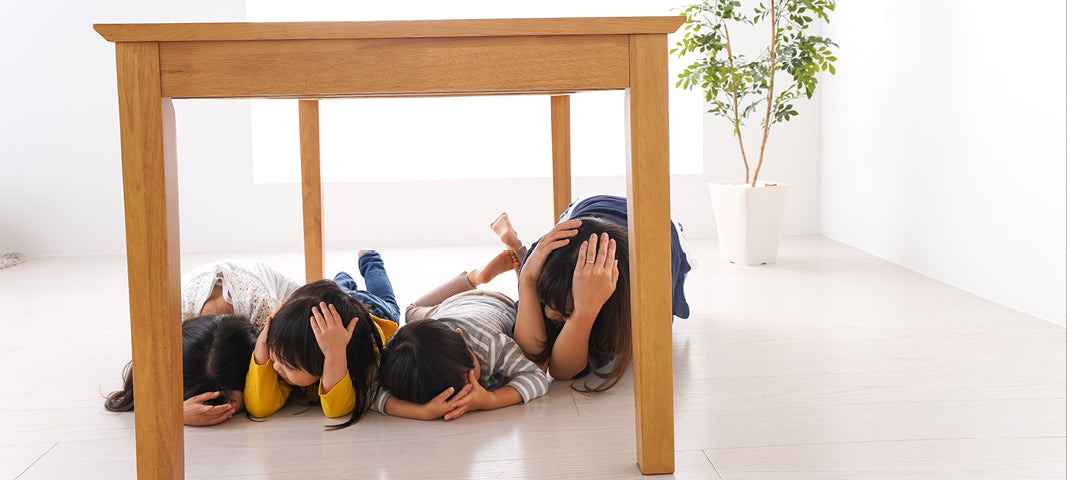
EE: Can you talk about the ways this changed how you prepared?
R: one of the things was, knowing how to use your supplies. [I started doing] practice run-type scenarios, because when something happens, it’s a little different and you’re trying to figure out how to operate this or how to use that.
2. POWER SHOULD BE A CENTERPIECE OF YOUR EMERGENCY SUPPLY
And then definitely in the middle of it, we had the kerosene heater and we had light…but for us, then it was, OK, we need a generator.
And we definitely didn’t’ get rid of it either afterward.
We decided we needed to take this to the next level, [so we started storing fuel]. My husband was making a couple of trips and having to drive [after the storm]. Well, if that weren’t an option a generator isn’t going to do us any good.
Storing fuel is quite tricky. Right now we still store gasoline in the five-gallon containers and [we’ve] got to use it or keep treating it—that type of stuff. Storage of fuel is something that’s not an easy fix
3. INFORMATION SAVES LIVES. GET EDUCATED!
And afterward I started doing a lot of research. Reading articles and downloading lost of lists from the internet.
I would go down through and mark what I had and see what was listed. I would consider it and we would discuss. [We’d decide]: that’s a good idea, we need to get that. So that’s how we started adding things.
I have several notebooks full of articles…I printed them out and have them all in document protectors and they’re organized by what the topics are. Water storage and treating water [for example]—of course, I have water filters and ways to treat water, because you may have water but if it’s not drinkable you’ve got to have some way to use it. So I did research on that.
4. SPECIFICALLY RESEARCH TO FIND HOLES IN YOUR SUPPLY—THEN FILL THEM
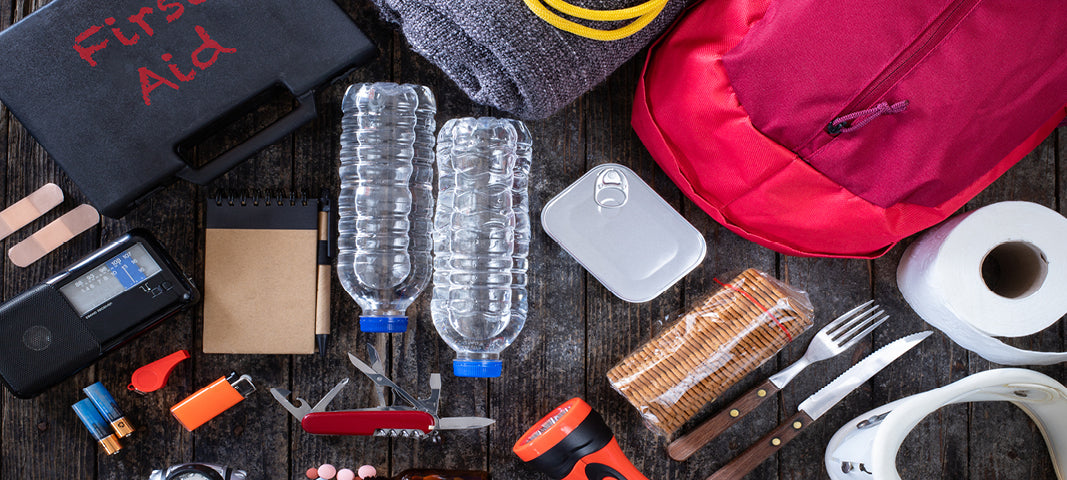
EE: What kinds of things [were you filling your supply with afterward]—food, gear?
More food, definitely. We’ve added a lot of food since then.
We had a 72-hour kit—we had one probably at that time with just some basic supplies in it. Since then we have one in every vehicle and I’ve added a lot of everyday supplies.
Solar things [as well]. The solar flashlights. The hand-cranked flashlights. Things that don’t require batteries.
I’ve got a little solar panel and a little generator that it works off of.
That’s the type of stuff that came afterward.
5. SHARE WITH YOUR COMMUNITY
R: We [also] had a little trial run with our group at church. We had done some classes…it was supposed to be a “24 hours with no power and no water” event—use just what’s in your emergency kit. [Then we’d discuss] what did you learn, how did it go, were you missing this—that type of stuff.
So I pushed for something like that in our group. Not everyone is up for that!
6. DON’T GET OVERWHELMED! BUILD YOUR SUPPLY LITTLE BY LITTLE WITHOUT SPENDING TOO MUCH

EE: Wow, your husband and community are lucky to have you! Is there any final advice you’d like to share?
R: When people talk to me about getting started, they don’t know where to start or they feel overwhelmed.
My best advice would be, just start where you’re at. Start by adding one thing that you think would be useful. Start buying something you think you could use that would be needed in an emergency and before long you’ve got quite a few things.
You get an interest in it and then that gets you going to the next level.
EE: The one thing that most of us do have [is] a little bit of a luxury of time. You can start small and buy and buy and buy and if you keep it up consistently, when the day comes…you’ll have something put away.
R: That’s exactly how I’ve done [it]. We don’t have the money that we can just go out and buy all this stuff at one time. It’s been a matter of years of just adding a little here and little there and then eventually you’ll get there.
EE: Thank you Rita for sharing your incredible story and wonderful advice.
To our Emergency Essentials family, don’t forget, Rita is our May 2020 Preparedness Stories winner. She submitted her story at our website www.prepstories.com.
If you or someone you know has a preparedness story, go there and tell us about it. If you win, you’ll receive a 1-month food supply and be entered to win a three month food supply.
To hear past or future preparedness stories, sign up for our newsletter or follow us on Facebook at #PrepStoriesContest.
Thank you so much again, Rita. And till next time friends, God bless, stay ready, and stay safe!

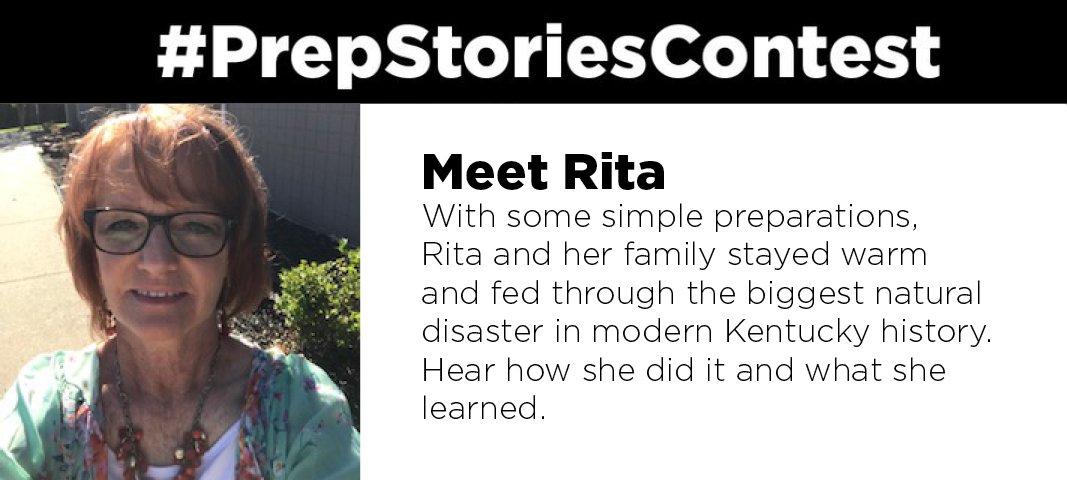

5 comments
James
Good job Rita and @Dale Farmer. You are right on point about gas / propane and storage. I love reading lessons learned, and one of those I read was about a severed gas line (may be earth quake). Their lesson was to go propane and have it on site. Yet another lesson was about the generator and the propane tanks with respect to flooding. Their generator was too low flooded out, and the 1/2 filled propane tanks became buoyant and ripped away. I hope these thoughts are helpful in your planning.
Margaret Fain
This brought back some memories! My Mom lay dying in a hospital in western KY and even the generators couldn’t keep up. They started turning them off for awhile every night. I was 1000 miles away from all my wonderful preps, but those bologna sandwiches were better than starving. Yes, they even ran out of food. By the time my Mom passed away, things were starting to recover. But they couldn’t bury her for days, the funeral home was so far behind. Have never really had to use many of my preps, but still glad to have them!
Dale Farmer
Generator fuel storage problems. If you have gas service or propane tanks at home, you can purchase duel fuel or tri fuel generators. If you have gas service then your gas company can setup a fuel hookup for a portable generator, or for a permanant generator. IF not, then you can run the generator on propane. IF you have a big tank, then consult your propane dealer for hookup info. You can run on portable tanks. I find I get about 12 hours runtime for a standard propane grill tank. So I keep a half dozen filled at all times at home. Observe safe tank storage precautions. I chain mine to a post in the back yard. When using generator, I roll it out and chain it to the post also. Propane lasts in the tank until the tank springs a leak.
Connie Robinson
Rita is a great example of how everybody should be prepared. Hopefully people will learn from her and her experience.
Rebecca
WOW, Rita!!!! I couldn’t imagine being in the freezing cold! How wonderful that you have the peace or preparedness. What a blessing. So glad that you guys had enough and only needed to buy a generator and some gas! It is amazing how little we truly know until we have a disaster or major ice storm! It does help to have some knowledge and then us that knowledge to make your preparedness better. So glad you survived, were prepared and had peace through it all!!! Congrats on winning!!!!